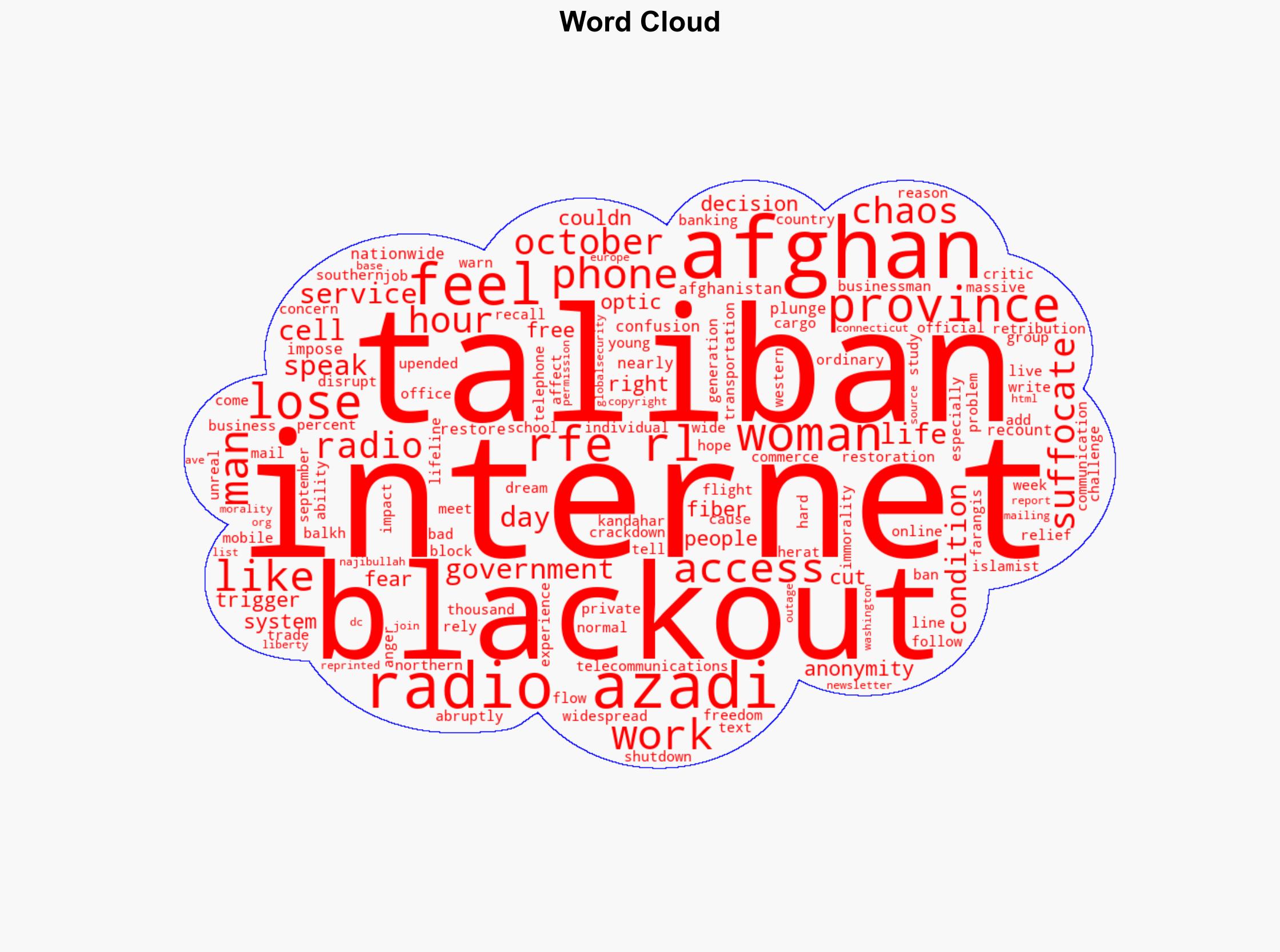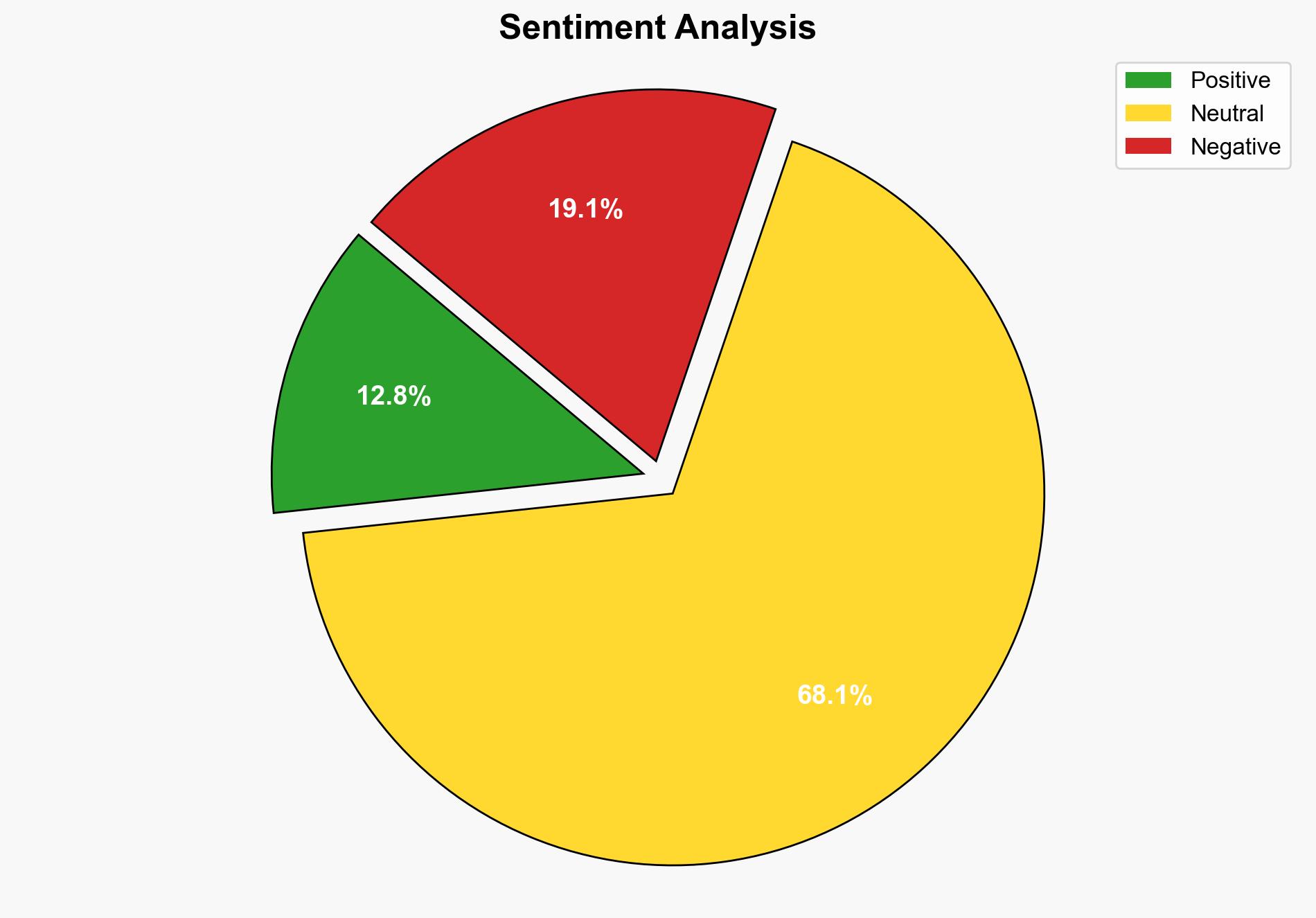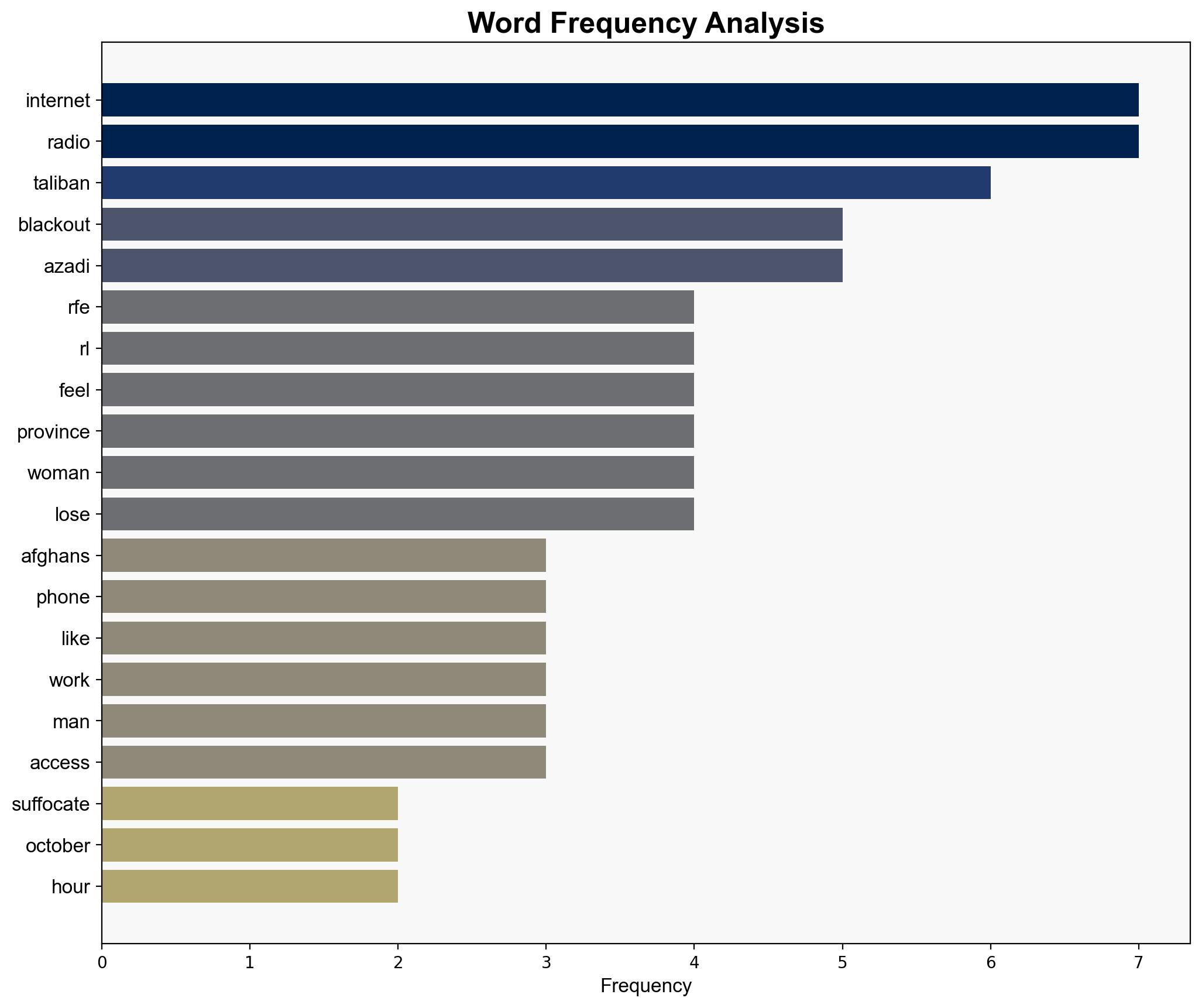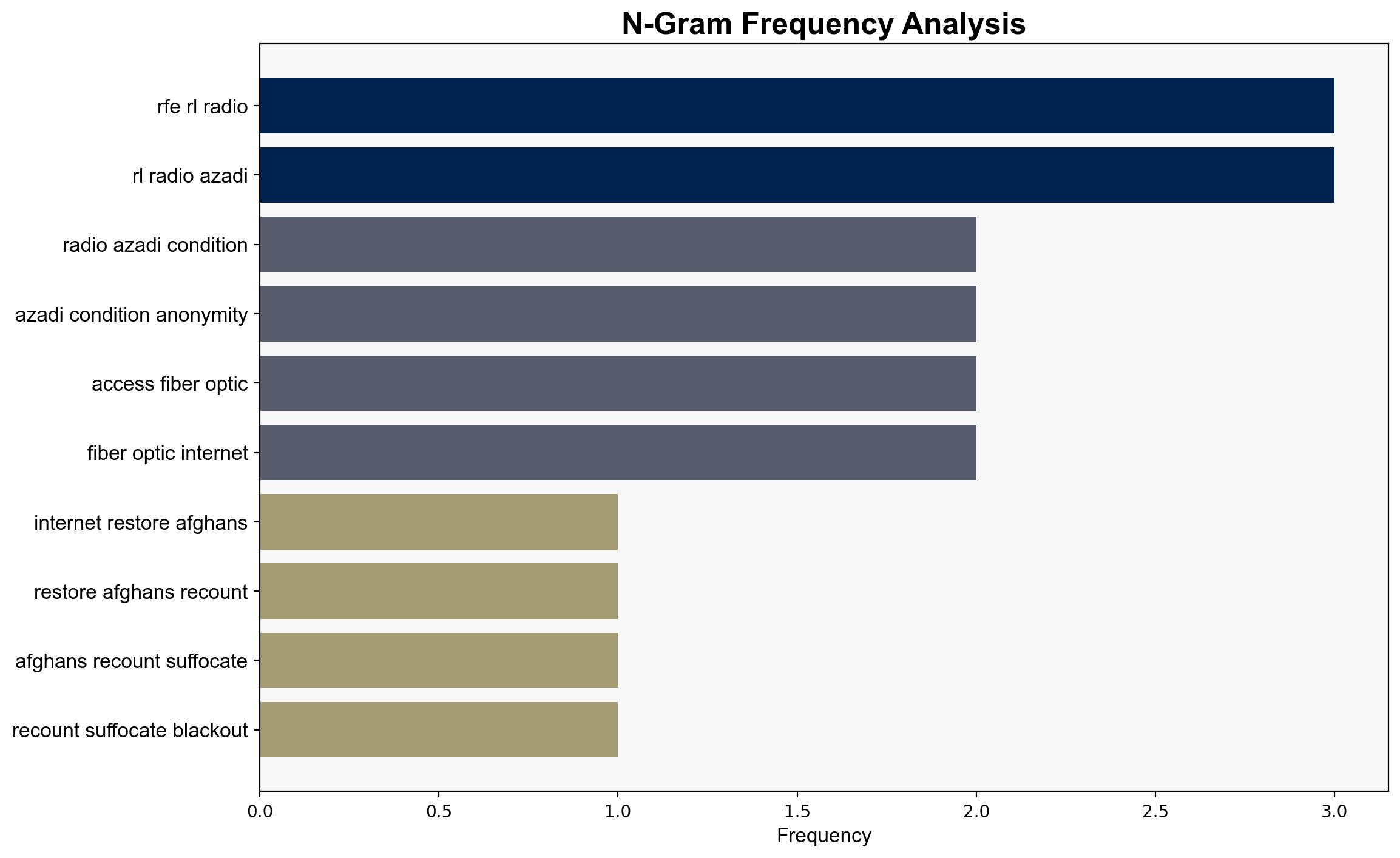After Internet Restored Afghans Recount ‘Being Suffocated’ During Blackout – Globalsecurity.org
Published on: 2025-10-03
Intelligence Report: After Internet Restored Afghans Recount ‘Being Suffocated’ During Blackout – Globalsecurity.org
1. BLUF (Bottom Line Up Front)
The most supported hypothesis is that the Taliban’s telecommunications blackout was a strategic move to consolidate control and suppress dissent, with a moderate confidence level. Recommended actions include enhancing monitoring of Taliban communications strategies and supporting alternative communication channels for Afghan civilians.
2. Competing Hypotheses
Hypothesis 1: The Taliban imposed the telecommunications blackout primarily as a security measure to prevent coordination among opposition groups and to suppress potential unrest.
Hypothesis 2: The blackout was primarily motivated by the Taliban’s desire to enforce moral and social controls, limiting access to information deemed contrary to their ideology.
Using Analysis of Competing Hypotheses (ACH), Hypothesis 1 is better supported due to the timing of the blackout coinciding with previous actions to limit fiber optic access, suggesting a pattern of control rather than purely ideological enforcement.
3. Key Assumptions and Red Flags
– Assumption: The Taliban has the technical capability to selectively impose and lift telecommunications blackouts.
– Red Flag: Lack of official reasoning from the Taliban raises questions about the true purpose of the blackout.
– Cognitive Bias: Confirmation bias may lead to overemphasizing reports of dissent suppression without considering alternative motives.
– Missing Data: Detailed information on the Taliban’s internal decision-making processes is unavailable.
4. Implications and Strategic Risks
The blackout underscores the Taliban’s ability to disrupt communications, posing risks to economic stability and civilian morale. It highlights potential for future escalations in control measures, affecting regional stability and international relations. The psychological impact on Afghan citizens, particularly women, may lead to increased emigration pressures and humanitarian concerns.
5. Recommendations and Outlook
- Enhance intelligence gathering on Taliban communication strategies and capabilities.
- Support development of resilient communication networks for Afghan civilians.
- Scenario Projections:
- Best Case: International pressure leads to reduced frequency of blackouts and improved civilian communication access.
- Worst Case: Increased frequency of blackouts leads to heightened unrest and further economic destabilization.
- Most Likely: Periodic blackouts continue as a tool for control, with intermittent international condemnation.
6. Key Individuals and Entities
– Farangis Najibullah (report contributor)
– Radio Azadi (information source)
7. Thematic Tags
national security threats, cybersecurity, counter-terrorism, regional focus





